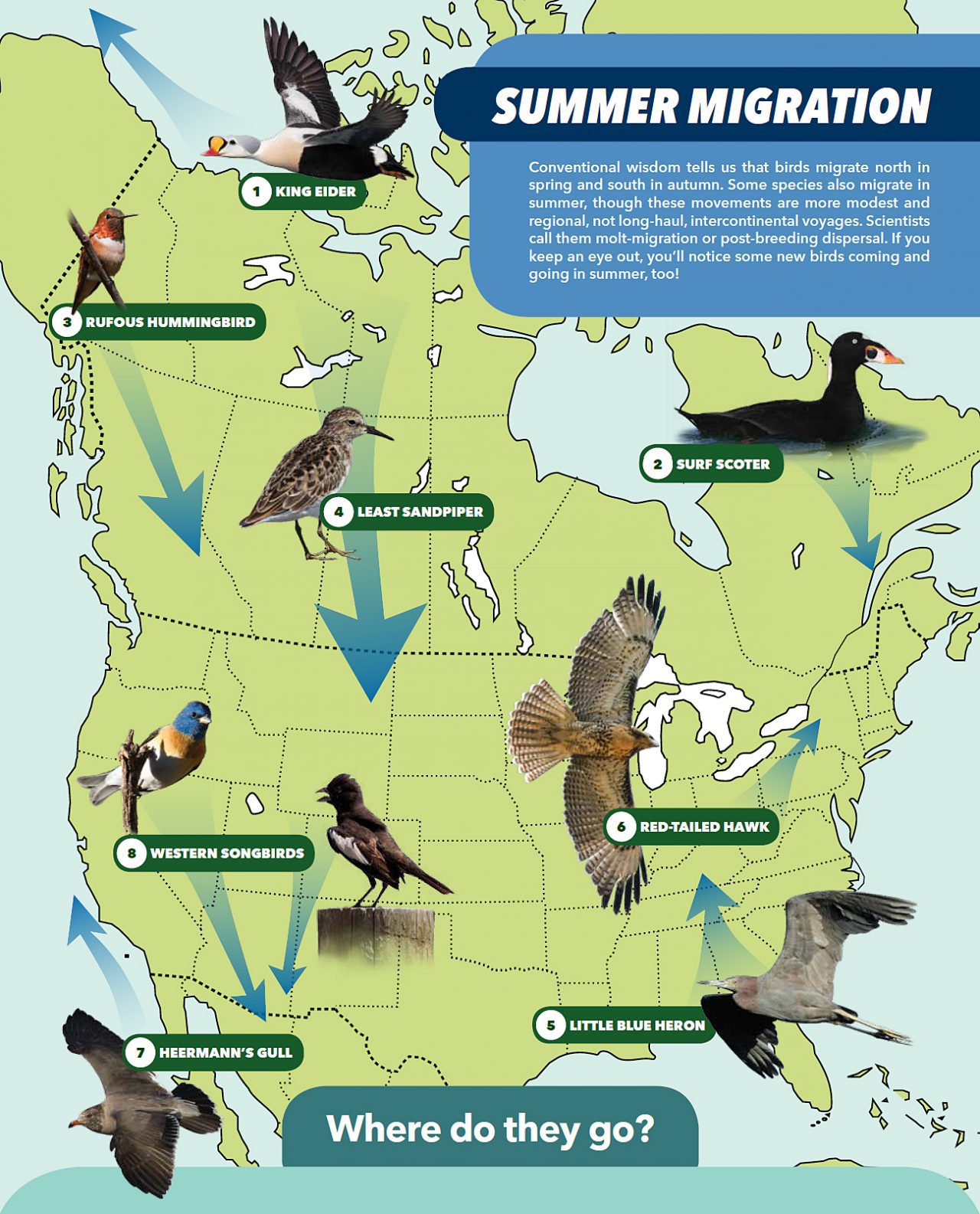These 8 Unexpected Migration Routes Give You Reason to Go Birding in Summer
July 16, 2014Conventional wisdom tells us that birds migrate north in spring and south in autumn. Some species also migrate in summer, though these movements are more modest and regional, rather than long-haul, intercontinental voyages. And they often head in counterintuitive directions as birds seek out specific seasonal resources instead of making a beeline for their winter range.
Scientists call these movements molt migrations or postbreeding dispersal. We’ve compiled the following examples of birds on the move from all over North America, and we explain the reasons below. It all adds up to extra incentive to keep your eyes peeled—you may notice new birds coming and going all summer long.
1. Adult male King Eiders leave their mates partway through nesting and fly off to grow a new set of feathers. Hundreds of thousands of eiders pass by Pt. Barrow, Alaska, in July on their molt migration to the Bering Sea.
2. Surf Scoters leave their breeding sites in Quebec and Labrador to grow new wing feathers in the St. Lawrence River estuary.
3. In July and August, adult male Rufous Hummingbirds are among the first birds to head south toward their wintering grounds in Mexico.
4. Arctic-breeding shorebirds, including Least Sandpipers, begin turning up in the lower 48 states by the end of June. These are adults that likely failed in their breeding attempts, so they didn’t have to stick around to raise young.
5. After breeding, adult and juvenile heron and egret populations shift slightly northward. Little Blue Herons wander well north of their breeding range in the late summer.
6. After fledging, the juveniles of several species of raptors move north. On days with a southwest breeze in August, upwards of 1,000 juvenile Red-tailed Hawks can be seen flying along the shore of Lake Ontario. Bald Eagles also cruise north in the summer.
7. Several species that breed along the Baja Peninsula, including Heermann’s Gull, disperse north along the coast after breeding, some heading all the way up to Vancouver.
8. A number of western songbirds—including Lazuli Bunting and Lark Bunting—head to the Mexican monsoon region as their breeding sites dry up in late summer. The monsoons unleash a flood of food, such as flowering plants and insect hatches, that these birds can feast on to refuel during the energetically intense molting period. After growing a new set of feathers, they continue south to wintering grounds in Mexico and Central America.
More resources for understanding migration:
- BirdCast uses data, weather forecasts, and radar imagery to make weekly, regional predictions for spring and fall migration
- eBird Status and Trends maps reveal the beauty and nuance of migration routes
- When Will Yellow Warblers Return? Check Our Animated Map
- Flyways for Flyweights: Small Birds Capitalize on Weather Patterns During Epic Migrations


All About Birds is a free resource
Available for everyone,
funded by donors like you



